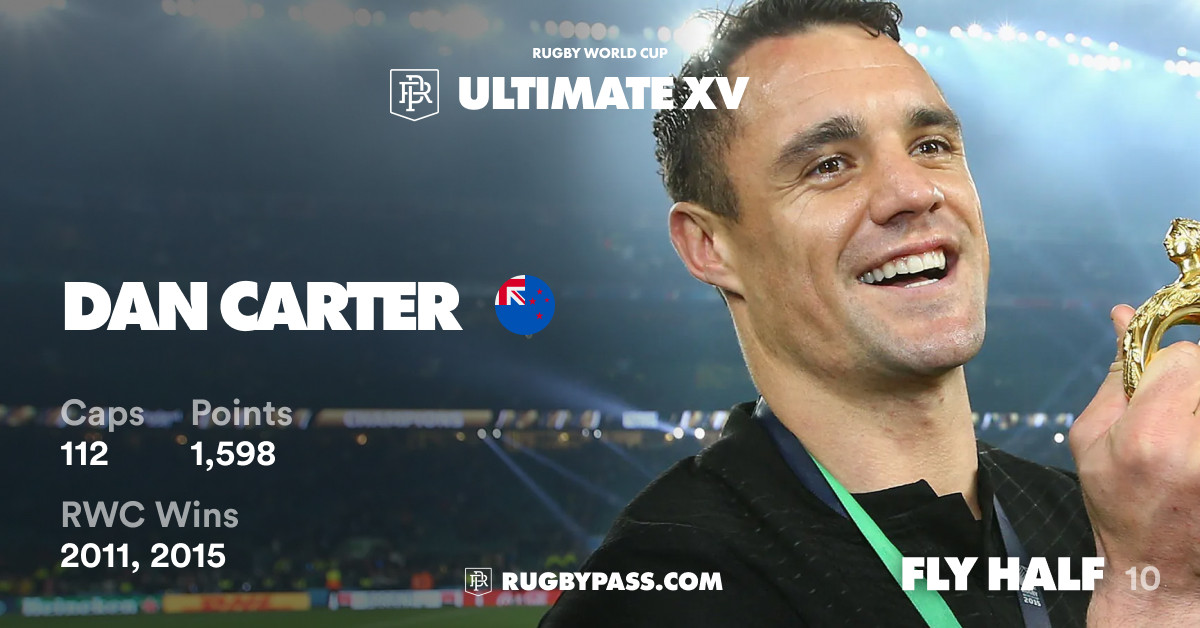Former All Blacks fly-half Nick Evans has overlooked the great Dan Carter at number 10 in his Ultimate XV and instead opted for a Wallabies legend as playmaker. Evans, who won 16 caps for New Zealand during his playing career, played as both a fly-half and full-back, but it was the former where his game really flourished. Unfortunately, he was stuck behind one of rugby union’s greats in Carter as the pair’s careers collided and he decided to leave the Blues for Harlequins in 2008. The Premiership was blessed by his talents as he shone for Quins, but the move to England meant he had to forgo playing in what became a special All Blacks side. Indeed, New Zealand went on to lift the World Cup in 2011 and 2015 while Evans was a Twickenham Stoop favourite, helping them win the Premiership in 2012.
Appearing on Danny Care’s show Hits Different, the now Harlequins attack coach was asked to provide his Ultimate XV of stars that he had played with or against. Evans began with his forward pack and it was a formidable eight with All Blacks duo Tony Woodcock and Carl Hayman packing down either side of Schalk Brits. The 44-year-old had an all-Springbok lock pair of Bakkies Botha and Victor Matfield, while Juan Smith, Richie McCaw and Rodney So’oialo made up his back-row.
Moving to the backs and Evans rewarded Care’s longevity with Harlequins and England and then came a surprise call at fly-half as Stephen Larkham got the nod. “Wow, interesting, here we go,” Evans said when the debate reached the number 10 shirt. “I am probably going to get hammered for this so this will be me. I’m picking not a New Zealander and again probably one of the players I have spoken a little bit around and who I modelled my game on. That’d be Stephen Larkham.”
“The reason I’m putting him in there is, as I said, I modelled a lot of my game on him (Larkham). He was part of that Brumbies team that was unbelievable,” he explained. “They kind of revolutionised that second play; the old back, the layered attack and it was literally like ‘what is this sorcery?’ Your full-back is like ‘what the hell is going on here?’ There’s down lines and there’s people out the back and who do I take here?
“No one could double defend. You used to be able to double defend in the day cause there used to be like a wide out the back and you could swim off and now there was like this tight little shape. They were unbelievable and I think he kind of revolutionised that flat to the line, ability to pull the ball back, play front line and be a threat himself so I kind of wanted to be like that so, yeah, you’d have big Stevie outside you.”
Evans continued revealing his team piece by piece and wing was next on the list, with Springboks legend Bryan Habana and Fiji star Rupeni Caucaunibuca selected. Aaron Mauger was his choice at inside centre before Jaque Fourie was named outside him and his final decision saw Mils Muliaina make his Ultimate XV at full-back.
Evans’ Ultimate XV: A Breakdown
Evans’ Ultimate XV is a fascinating blend of players from different eras and nationalities. The team is packed with experienced and versatile players who would be able to adapt to any situation. Here’s a breakdown of each player’s key attributes and why Evans chose them:
The Forwards
Evans’ forward pack is a powerhouse of a unit. Tony Woodcock and Carl Hayman are two of the most feared props in the history of the game. They were a formidable duo for the All Blacks for many years. Schalk Brits, the former Springbok and Saracens hooker, is a surprise pick, but Evans praised his ability to play like a back with the physicality of a forward. The lock pairing of Bakkies Botha and Victor Matfield is one of the most feared in the history of the game. They were instrumental in the Springboks' success in the 2000s. The back row is equally impressive, featuring Juan Smith, Richie McCaw, and Rodney So’oialo. Smith is a big and strong player who was also able to play in the loose. McCaw, widely regarded as the greatest captain in rugby history, is known for his leadership and work rate. So’oialo was a versatile player who could play in both the back row and the second row.
The Backs
Evans’ backline is a mix of power and finesse. Danny Care is a natural choice at scrum-half, having hosted the podcast and being a former Harlequins teammate of Evans. It’s the fly-half position that has caused the most stir, with Evans opting for Stephen Larkham instead of Dan Carter. He said that he modelled his game on Larkham, a key player in the Brumbies’ winning machine of the 90s. The wings are filled with two of the most electrifying players in the history of the game, Bryan Habana and Rupeni Caucaunibuca. Habana was known for his speed and footwork. Caucaunibuca was one of the most exciting wingers to watch in his prime. The midfield is also strong, with Aaron Mauger and Jaque Fourie. Mauger was known for his communication skills and ability to play the ball. Fourie was a big and powerful centre who could crash over defenders. Mils Muliaina was a versatile player who could play at full-back, wing or centre and was also a teammate of Evans. His decision to include him as his full-back completes a strong team that Evans believes could take on any challenge.
The All Blacks’ Legacy
Evans’ selection of Larkham over Carter is a bold one, and it’s likely to spark debate among rugby fans. Carter is widely regarded as one of the greatest fly-halves of all time, and he was a key player in the All Blacks’ successful World Cup campaigns in 2011 and 2015. Larkham is also a legendary figure in Australian rugby, but he didn’t achieve the same level of success as Carter at the international level. However, Evans’ selection of Larkham is a testament to the player’s influence on the game and his ability to revolutionize the attacking game.
Conclusion: A Team Of Legends
Nick Evans’ Ultimate XV is a testament to the quality of players he has played with and against during his career. He has selected a team of legends who are all capable of dominating any game. It’s sure to spark debate amongst rugby fans, and it’s a team that could take on any challenge. It is testament to the enduring legacy of rugby that we see these great players being discussed and debated long after their playing days are over.
















